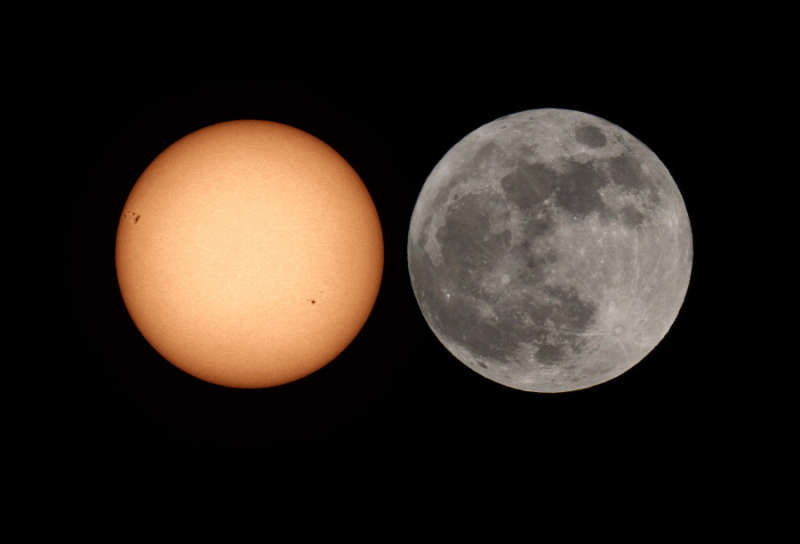Credit & Copyright: Charlie Szabototh
Explanation:
The Super Moon wins, by just a little, when
its apparent size is
compared to the Sun in this ingenious composite picture.
To make it, the Full Moon on May 6 was photographed
with the same camera and telescope used to image the Sun
(with a dense solar filter!) on the following day.
Of course, on May 6 the
Moon was at perigee,
the closest point to Earth in its eliptical orbit,
making it the largest Full Moon of 2012.
Two weeks later, on May 20, the
Moon will be near
apogee, the most distant point in its orbit, so by then it will
be nearly at its smallest apparent size.
It will also be a dark
New Moon on that date.
And for some the New Moon will be surprisingly easy
to compare to the Sun, because on
May 20 the
first solar eclipse of 2012
will be visible from much of Asia, the Pacific, and North America.
Along a path 240 to 300 kilometers wide, the
eclipse will
be annular.
Near apogee the smaller silhouetted Moon will fit just
inside the bright solar disk.
1999 2000 2001 2002 2003 2004 2005 2006 2007 2008 2009 2010 2011 2012 2013 2014 2015 2016 2017 2018 2019 2020 2021 2022 2023 2024 2025 |
Yanvar' Fevral' Mart Aprel' Mai Iyun' Iyul' Avgust Sentyabr' Oktyabr' Noyabr' Dekabr' |
NASA Web Site Statements, Warnings, and Disclaimers
NASA Official: Jay Norris. Specific rights apply.
A service of: LHEA at NASA / GSFC
& Michigan Tech. U.
|
Publikacii s klyuchevymi slovami:
full moon - perigee - apogee - solar eclipse - polnolunie - perigei
Publikacii so slovami: full moon - perigee - apogee - solar eclipse - polnolunie - perigei | |
Sm. takzhe:
Vse publikacii na tu zhe temu >> | |
